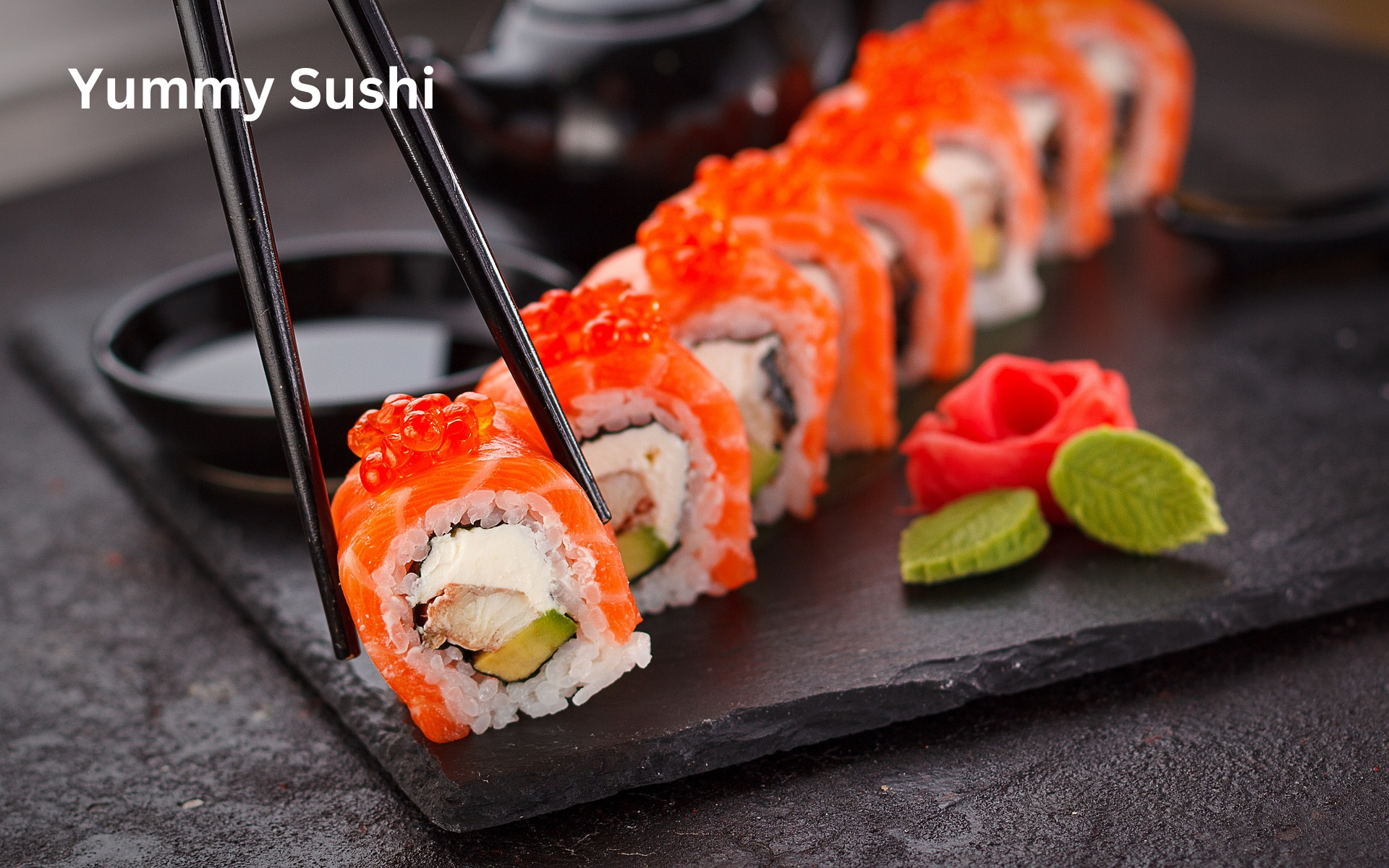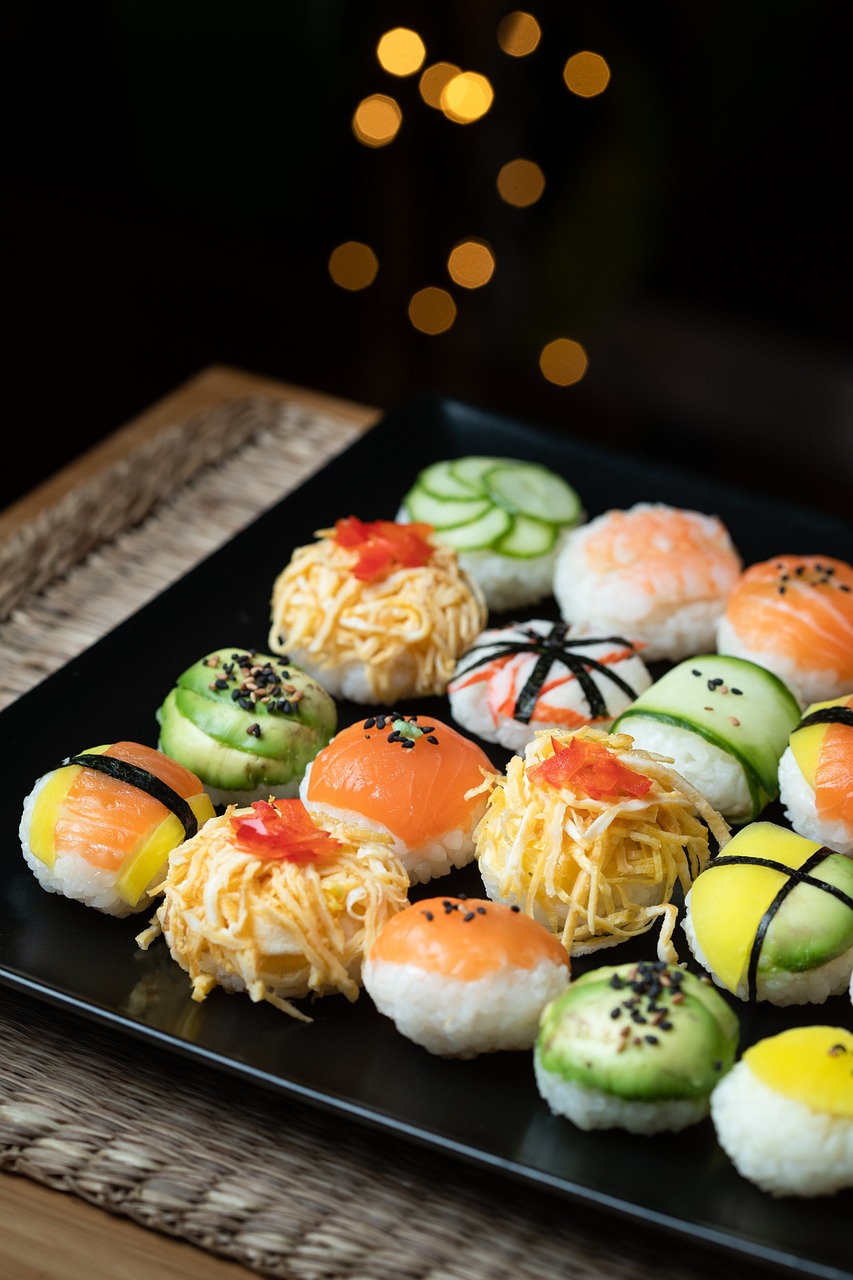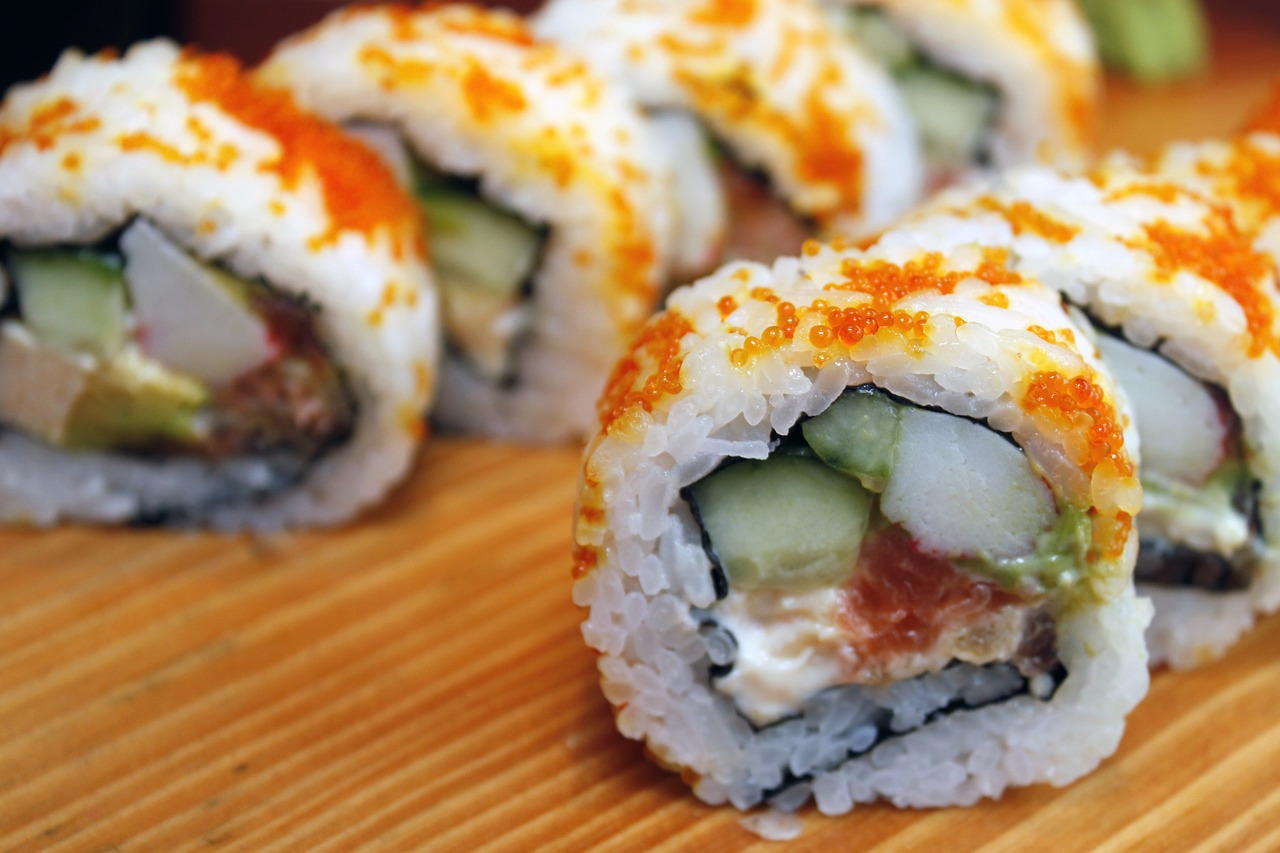Types of Sushi Rolls and More about Sushi Rolls

What is a Sushi Roll?
A sushi roll, also known as maki, is a typical Japanese dish made from vinegared rice combined with various fillings, all wrapped in seaweed (nori). Sushi rolls are often enjoyed with soy sauce, wasabi, and pickled ginger, providing a balance of flavors that highlight the freshness of the ingredients. These rolls can be as simple or as elaborate as one desires, making them versatile and appealing to a wide range of tastes.
The process of making sushi rolls involves precise techniques, from preparing the rice to selecting and arranging the fillings. The rolls are usually cut into bite-sized pieces, making them easy to enjoy as an appetizer or main course. Sushi rolls have become popular worldwide, not only for their unique flavors but also for their presentation and aesthetic appeal.
Main Ingredients
- Sushi rice: Short-grain rice seasoned with rice vinegar, sugar, and salt. This rice is sticky, which helps it hold together in the roll.
- Nori: Seaweed sheets that provide a crispy and umami flavor. Nori is also a key component in giving sushi rolls their structure.
- Fillings: Common fillings include raw fish (like tuna and salmon), vegetables (such as cucumber and avocado), and seafood (like crab and shrimp). The choice of fillings can vary greatly depending on regional preferences and individual taste.
- Rice vinegar: Used to season the rice, giving it a tangy flavor. The vinegar also helps to preserve the rice and enhance its texture.
- Sugar: Adds a touch of sweetness to balance the tanginess of the vinegar. The amount of sugar can be adjusted to taste.
- Salt: Enhances the overall flavor of the rice and helps to balance the sweetness and acidity.

Types of Sushi Rolls
1. Classic Rolls
- California Roll: A popular roll with imitation crab, cucumber, and avocado. It's often one of the first sushi rolls people try due to its mild flavor and accessibility.
- Tuna Roll: Features fresh tuna, often paired with a touch of wasabi. This roll is a favorite for those who enjoy a clean and simple taste of tuna.
- Salmon Roll: Includes succulent salmon, which can be complemented with cucumber or avocado. Salmon rolls are known for their rich, buttery flavor.
2. Specialty Rolls
- Dragon Roll: A creative roll featuring tempura shrimp, avocado, and eel sauce, resembling a dragon. It often includes additional ingredients like eel and spicy mayo for a complex flavor profile.
- Rainbow Roll: A colorful roll with crab, cucumber, avocado, and a variety of fresh fish like salmon and tuna on top. This roll is not only delicious but also visually appealing with its vibrant colors.
- Philly Roll: Combines smoked salmon with cream cheese and cucumber for a creamy texture. The combination of smoked salmon and cream cheese gives this roll a rich and indulgent flavor.
3. Regional Rolls
- New York Roll: A roll with spicy tuna, crab, and avocado, reflecting the bold flavors of New York City. It often includes spicy mayo and crunchy tempura bits for added texture.
- Tokyo Roll: Includes tempura shrimp, cucumber, and pickled plum, showcasing traditional Japanese flavors. This roll combines the crispiness of tempura with the tartness of pickled plum.
- Boston Roll: Features ingredients like shrimp, avocado, and cucumber, often topped with a light, tangy sauce. This roll highlights fresh and bright flavors, making it a popular choice in the Boston area.
Popular Countries for Sushi Rolls
- Japan: The birthplace of sushi, where traditional sushi rolls are widely enjoyed. Japanese sushi culture emphasizes freshness, quality, and presentation.
- United States: Home to many innovative sushi roll creations and fusion dishes. The sushi scene in the US is diverse, with restaurants offering both traditional and experimental rolls.
- Canada: Known for its diverse sushi options, including unique regional rolls. Cities like Vancouver and Toronto have thriving sushi markets with a variety of roll styles.
- Australia: Features a growing sushi culture with a focus on fresh ingredients. Australian sushi often includes local seafood and produce, reflecting the country's culinary trends.
- United Kingdom: Offers a variety of sushi rolls, with an emphasis on quality and presentation. Sushi has become a popular dining option in cities like London and Edinburgh.

Popular Selling Outlets in USA
- Sushi restaurants: Establishments like Sushi Palace and Sushi Ota offer a wide range of sushi rolls. These restaurants often feature a menu that includes both classic and specialty rolls.
- Japanese markets: Stores such as Mitsuwa Marketplace provide sushi ingredients and ready-made rolls. These markets offer a range of fresh and high-quality ingredients for making sushi at home.
- Grocery stores: Chains like Whole Foods and Trader Joe's sell pre-packaged sushi rolls for convenience. These grocery stores often offer sushi made with fresh ingredients and traditional techniques.
- Online delivery services: Platforms like Grubhub and Uber Eats allow you to order sushi rolls from local restaurants. These services provide a convenient way to enjoy sushi without leaving home.
Varieties of Sushi Rolls (Flavors of Sushi Rolls)
1. Vegetarian Rolls
- Cucumber Roll: A refreshing roll with crisp cucumber slices. This roll is light and perfect for those who prefer a simple, vegetable-based option.
- Avocado Roll: Creamy avocado provides a rich texture. Avocado rolls are known for their smooth, buttery flavor and are a popular choice among vegetarians.
- Carrot Roll: Sweet carrots add a subtle flavor and crunch. This roll is a great option for those looking for a sweet and crunchy sushi experience.
2. Non-Vegetarian Rolls
- Spicy Tuna Roll: Spicy tuna mixed with mayo and Sriracha for a kick. This roll combines the heat of spicy tuna with the creaminess of mayo.
- Salmon Roll: Fresh salmon combined with other ingredients like avocado or cucumber. The delicate flavor of salmon pairs well with a variety of fillings.
- Shrimp Tempura Roll: Crispy tempura shrimp adds a crunchy texture. This roll often includes avocado and cucumber for a balanced flavor.
Nutritional Facts
While sushi rolls are delicious, they also offer various nutritional benefits. Here is a general overview of the nutritional content:
- Calories: 200-500 per roll, depending on ingredients and size. Rolls with fried components or rich sauces tend to be higher in calories.
- Protein: 10-20 grams, provided by fish, seafood, or tofu. Protein content varies based on the type and amount of protein-rich ingredients.
- Fat: 10-20 grams, which can include healthy fats from fish or less healthy fats from fried ingredients.
- Carbohydrates: 20-30 grams, primarily from the rice used in the roll. The carbohydrate content is influenced by the amount of rice and any additional ingredients.
- Fiber: 2-3 grams, mainly from vegetables and seaweed. The amount of fiber can vary based on the type and quantity of vegetables used.
Is Sushi Roll a Seasonal Food?
Sushi rolls are available year-round, thanks to the versatility of ingredients. However, some components, particularly fresh fish, may be seasonal. Sushi chefs often adapt their offerings based on the availability of seasonal ingredients to ensure the highest quality and freshness.
For instance, certain types of fish may be more readily available during specific times of the year, influencing the types of rolls offered. Seasonal ingredients not only impact the availability of certain rolls but also bring variety and excitement to sushi menus throughout the year.

Cost and Sizes of Sushi Rolls
Cost of Sushi Rolls
The cost of sushi rolls can vary widely based on several factors. Typically, a standard sushi roll at a restaurant or sushi bar ranges from $8 to $15. Basic rolls, which include ingredients like cucumber and avocado, tend to be on the lower end of this price range. More elaborate rolls, featuring premium ingredients such as fresh tuna, eel, or tempura, can cost between $15 and $30. Specialty rolls with unique combinations or additional garnishes may command higher prices, reflecting their complexity and quality.
Sizes of Sushi Rolls
Sushi rolls generally come in a standard size, cut into 6 to 8 pieces. However, the size can vary depending on the restaurant or sushi bar. Some establishments offer larger rolls, cut into 10 to 12 pieces, providing more servings per roll. Additionally, sushi rolls are often available in different sizes or as part of a combination platter, allowing diners to enjoy a variety of rolls at a more economical rate.
Conclusion
Sushi rolls are a delicious and versatile Japanese dish, offering a range of flavors and ingredients to suit various tastes and dietary preferences. With its rich history, cultural significance, and global popularity, sushi rolls continue to be a beloved food option for many. Whether you're a sushi enthusiast or just discovering this culinary delight, there's a sushi roll out there for everyone!
From classic varieties like the California Roll to innovative creations like the Dragon Roll, sushi rolls cater to a wide range of preferences. The combination of fresh ingredients, careful preparation, and artistic presentation makes sushi rolls a unique and enjoyable dining experience. Exploring different types of sushi rolls can also provide insight into the rich culinary traditions of Japan and the ways in which this iconic dish has evolved globally.
Read about Different Flavors of SushiShare this topic:
Look at Our Other Topics

Website Development Checklist Cloud Stotage Cost Comparison How Was Your Week?


